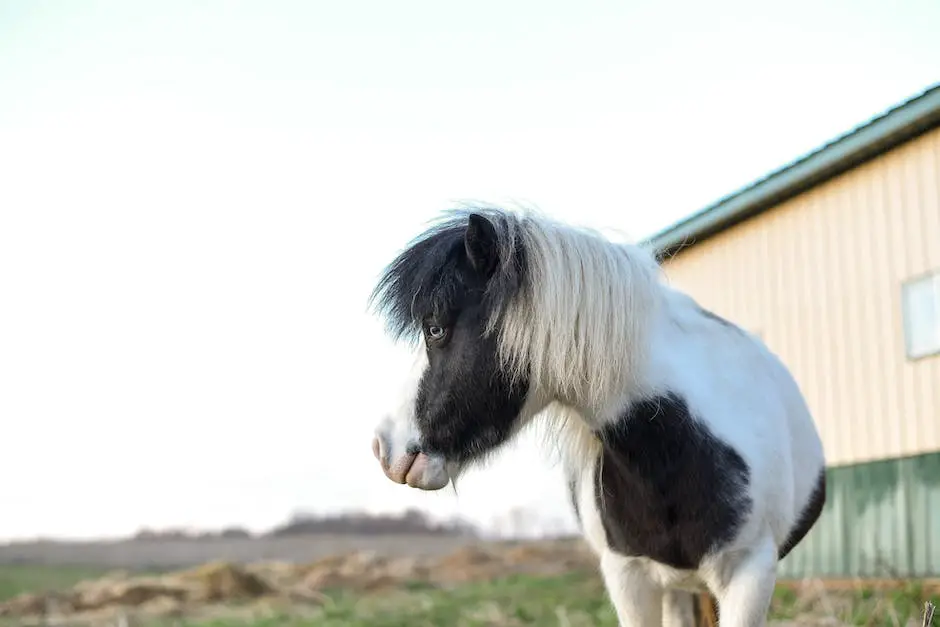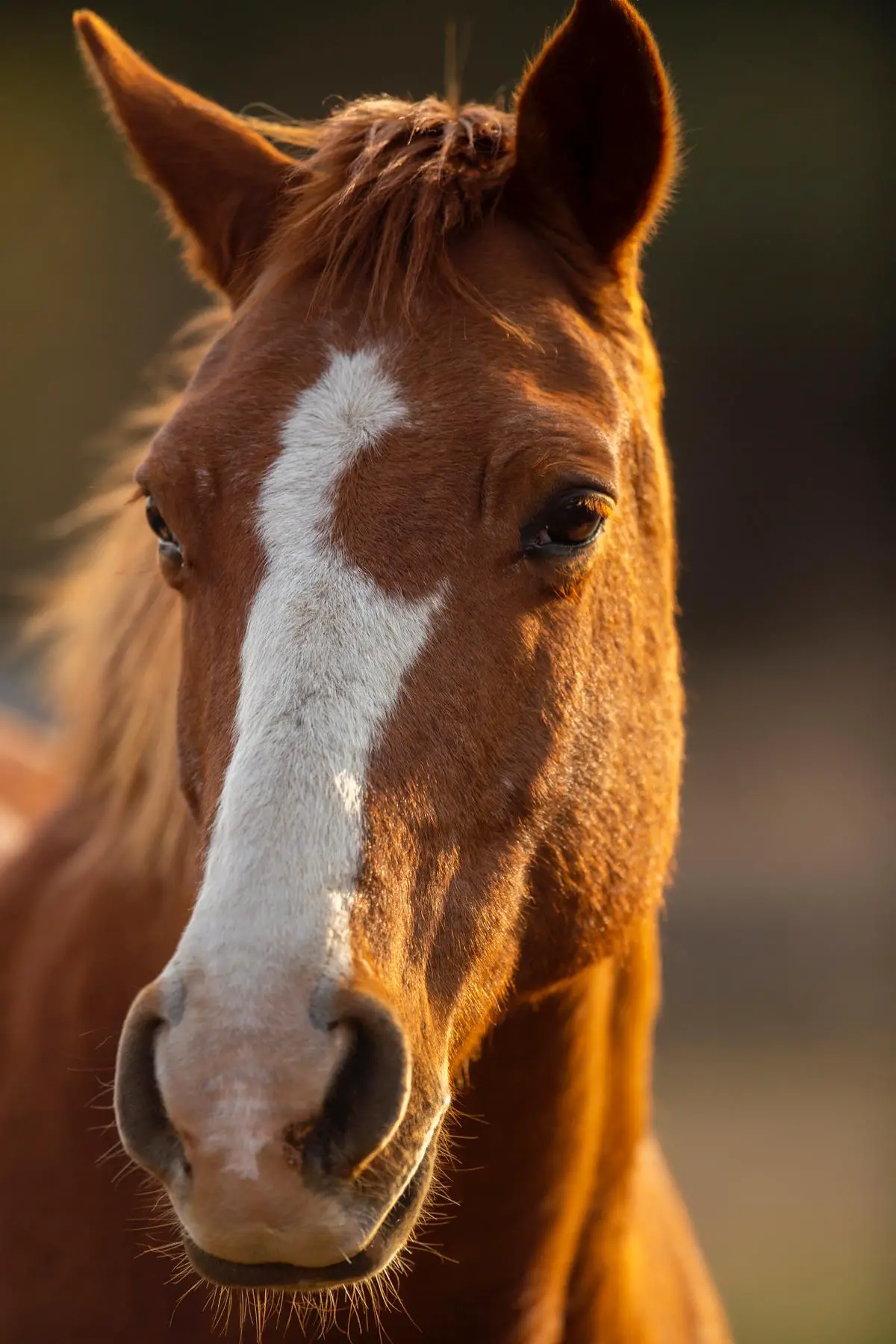In the complex world of equine health and management, one particular aspect that demands significant attention is temperature regulation. As a fundamental physiological process, it plays an indispensable role in maintaining the horse’s overall bodily functions. Understanding the nuances involved in equine temperature regulation encompasses a broad spectrum of factors ranging from the intricate physiological mechanisms to the influence of seasonal and environmental changes. Moreover, recognizing the potential health issues linked to improper temperature regulation not only ensures extended horse well-being but can also prevent avoidable disease conditions. Above all, a deeper comprehension of strategies to improve horse temperature regulation can lead to the creation of better horse management practices that promote optimal equine health.
Table of Contents (Horspedia)
Physiological mechanism of horse temperature regulation
The Marvel of Thermoregulation in Horses
No discussion of biology is complete without acknowledging the stunning complexity and efficiency built into each organic system as nature’s response to environmental needs. A case in point is the fascinating mechanism wielded by horses to regulate their body temperature, resisting the chill of the winter and the searing heat of the summer. This adaptation they possess, thermoregulation, demonstrates just how intricate and advanced biological systems can be.
Essentially, horses are considered large-bodied animals, whose chief challenge is, quite surprisingly, overheating more so than freezing. Their muscle activity produces a lot of heat, and when they are active, thermoregulation kicks into high gear. Their bodies, designed for large-scale heat dispersion, have several physiological mechanisms in place, which make thermal equilibrium possible.
Sweating is the primary avenue for heat loss, exploiting the latent heat of vaporization. The evaporation of water present in sweat from the skin surface absorbs body heat, effectively cooling the animal. Interestingly, the horse’s sweat glands are activated not only by thermal but also by nervous stimuli unlike in humans, making them consistently efficient.
Apart from sweating, horses use a thermoregulation method called vasomotion, essentially the constriction and dilation of blood vessels. In cold weather, the skin’s blood vessels constrict to reduce heat loss from the surface, retaining warmth in the vital organs. Conversely, in hot conditions, vasodilation occurs – the skin’s blood vessels expand, allowing more blood to flow near the skin’s surface, leading to heat dissipation.
Another noteworthy mechanism is panting, though less commonly employed by horses. Rapid, shallow breathing facilitates the loss of heat through the respiratory system when high ambient conditions disallow effective heat loss through sweating.
As is evident, the horse’s thermoregulation system is an intricate, evolutionary marvel. However, it’s not foolproof. Overexertion and extreme temperatures can indeed push the animal past its limits. That’s why it’s crucial to consider a horse’s thermal comfort when setting work loads, choosing housing conditions, and devising hydration schedules. Understanding, respecting, and supporting these magnificent animals’ physiological capabilities undeniably leads to horses ultimately delivering their best performance and well-being.
Armed with this knowledge, the relationship between humans and horses can be further enhanced, affirming the statement that every narrative of biological science, in its essence, is a fascinating tale of adaptation and survival. The mechanisms the horses employ to battle temperature fluctuations truly encapsulate the poetic scientific symbiosis between an organism and its environment.

Seasonal and Environmental Effects on Horse Temperature Regulation
The Intricate Dance of Weather, Environment, and Equine Thermoregulation
As seasons morph, altering weather patterns and environmental scenarios, it exerts a profound influence on a horse’s intricate balance of thermoregulation. Let’s delve deeper into these intriguing aspects and their bearing on equine heat regulation.
Seasonal changes underlie some of the most significant effects on a horse’s thermoregulation. During winters, horses increase their metabolic zone, a biological phenomenon to generate internal heat. Intriguingly, their thermoneutral zone, the climate spectrum with least metabolic heat production, shifts lower. Summer heat is another knotty challenge, demanding horses to enhance sweat production to lose excess internal heat effectively.
Unpredictable weather patterns, such as sudden heatwaves or cold spells, test a horse’s adaptive capabilities. Their cool-blooded nature assists in maintaining internal temperature stability amid swift weather changes. Horses utilize adaptive behavioral strategies, like seeking shade in sweltering summer or huddling together during frigid winters, affirming the sheer brilliance with which these majestic animals interact with their environment.
The essentiality of environmental factors cannot be understated in influencing equine thermoregulation. Wind speed, humidity, solar radiation, ambient temperature – every nuance impacts how a horse balances its internal temperature. For instance, high humidity reduces the effectiveness of sweating and hampers heat loss, posing risks of overheating even on a cool day.
Available nutrition and water supply are also crucial. Adequate hydration is vital for sustaining sweat-induced heat loss. In contrast, well-nourished horses display a better ability to withstand colder climates, demonstrating the interconnected roles of diet and thermoregulation.
Body condition and fitness of the horse are equally important. Well-conditioned horses have a far better thermoregulatory capability due to efficient sweat production and superior vasomotor control, making them more resilient in extreme weather conditions.
While we usually acknowledge horses’ ruggedness, the need to provide them with suitable shelter becomes paramount given these factors. Shelters shield horses from harsh weather while providing a stable environment, thereby supporting their thermoregulatory system.
Considering these complex interactions, it becomes evident that proactive management practices are critical. These can include adequate hydration, feed supplementation, provision of appropriate shelter, and tailored workout regimes depending on weather and environmental conditions.
In the world of equine sciences, thermoregulation truly is a ballet of physicochemical interactions, where environmental vagaries set the stage and the horse, a stunning ballerina, performs with finesse. Through further understanding, adoption of supportive strategies, and an unwavering appreciation for this blend of science and artistry, we can ensure the well-being of these incredible creatures. The narrative of equine wellbeing and performance evolves as we advance in unravelling the complications and marvels of equine thermoregulation. This dance, seemingly eternal, keeps us spellbound, reflecting our unyielding quest for knowledge and love for the equine world.

Health issues linked to horse temperature regulation
Impaired Thermoregulation in Horses: Unmasking Health Ramifications
A healthy horse’s thermoregulation system is undeniably impressive – a coordinated dance of convolutions made evident by the sweat lather across its coat and the renewed vitality of the animal after a meticulously calibrated release of body heat. Yet, what happens when this system is undermined?
Central to our discourse are the potential health issues tied to impaired temperature regulation in horses. These encompass inflammatory conditions, metabolic disorders, nervous system damage, exhaustion, and in extreme cases, fatality.
Inflammatory conditions, such as heat stress and heat stroke, are primary concerns in cases of impaired thermoregulation. Heat stress, a state of elevated body temperature, can progress to heat stroke – a severe and often fatal condition, if unaddressed promptly. The inflammatory responses induced by these thermal insults can compromise organ function and manifest as multi-organ dysfunction if the horse’s body temperature is not brought back within a physiological range in a timely manner.
Next in line of considerations are metabolic disorders including Equine Metabolic Syndrome (EMS) and Polysaccharide Storage Myopathy (PSSM). Horses with these disorders may experience decreased sweating, also known as anhidrosis, hindering the dissipation of body heat. This can exacerbate the already high risk of laminitis, a painful condition affecting the horse’s feet, that these horses face.
Impaired thermoregulation can also pose a significant threat to the horse’s nervous system – a condition aptly named Equine Neurologic Hyperthermia. When horses are unable to properly regulate their body temperature, their central nervous system may start to dysfunction, leading to symptoms ranging from incoordination to seizures.
On a less severe yet equally important note, horses suffering from inadequate temperature regulation often present signs of exhaustion. This reduced stamina can impact their overall happiness and productivity, especially for working or performance animals.
Of mention too is the risk of death in particularly severe instances of temperature dysregulation. This devastating consequence represents the catastrophic culmination of the physiological disturbances that result from the failure to balance the scales of heat production and dissipation in the equine body.
Understanding these possible health ramifications underscores the need for better equine management practices towards improved health outcomes. This includes regular veterinary checks, appropriate active and resting periods, ensuring the horse’s access to cool shade and clean water, among others.
The relationship between humans and horses asks for a mutual respect and understanding on a physiological level. By comprehending the nuanced mechanisms of the horse’s thermoregulation, human partners can better support equine health and welfare, bolstering the bond between the species that transcends ancient history to the present day.
As we delve deeper into the biological labyrinth that is thermoregulation, the interlocking pieces of this puzzle reveal a living spectacle, one that involves the horse, its environment, its human partners and the collective call for balanced health and wellbeing in the face of changing environmental conditions.
Thermoregulation, indeed, is as much a scientific inquiry as it is a narrative of survival and adaptation. Each horse with its unique thermoregulatory signature unearths a novel chapter in this universal pursuit for optimal living, making every stride –every sweat-drenched, breeze-ruffling stride – count towards a tale of evolutionary marvel in equine thermoregulation.

Improving horse temperature regulation and welfare
Equine Thermoregulation: Nuances and Strategies in Modern-Day Equine Management
Horses, magnificent creatures that they are, entrust their lives to the care and stewardship of humans. Thus, it becomes necessary to comprehend and respect the complexities of horse physiology and the rich tapestry of intertwining factors that contribute to their wellness. Thermoregulation – the sophisticated mechanism of maintaining stable internal temperatures despite external fluctuations – emerges as a pivotal component in horse care. Having explored the complexity of equine thermoregulation, and the effects of seasonal changes, environmental factors, and various health conditions, it is time to delve into the actionable steps for equine caregivers.
Shedding unruly hair – a natural seasonal response in preparation for the hot summer months – assists horses in maintaining cool body temperatures. This carefully orchestrated biological response can be supported with regular grooming. The activity not only aids in removing the extra insulating hair but also strengthens the horse-human bond, offering opportunities to monitor the horse’s body condition and to detect early signs of malaise.
Bathing routines involving sponging and hosing can serve as sources of relief for horses during hot weather. However, these practices need to adhere to guidelines for effectiveness, such as avoiding cold water which can constrict skin blood vessels and hence impede heat dissipation. Lukewarm water is the appropriate choice, focusing on high blood flow areas such as the chest, neck, and inner thighs for optimal results.
Cooling techniques can be adopted post-exercise, with controlled use of fans or walk-in cooler facilities. Strategic misting systems are increasingly popular, deploying fine water droplets on horses which evaporate to bring down skin temperature. Similarly, provisions of shade such as trees, shelters, or canopies reduce direct sunlight exposure and act as efficient cooling aids.
Inclusion of electrolytes aids in replenishing the loss incurred through sweating, especially during prolonged exercise regimes or endurance events. Quantities need to be judicious, and addition should be justified on account of considerable sweat loss. Minerals such as sodium, potassium, and chloride are prime components of sweat, and their replenishment is essential for uninterrupted physiological functions and overall well-being.
Nutrition plays a dual role in thermoregulation. On one hand, inadequate energy intake can compromise thermoregulation, while excessive energy also predisposes to overheating, especially in obese horses. Therefore, it is vital to strike a balance in feed allocation and monitor the body condition regularly. Forage should form the backbone of the diet, providing the necessary long roughage for effective gut function and metabolic heat production in cold environments.
Water holds unparalleled importance in equine thermoregulation. Providing ample fresh drinking water is non-negotiable, encouraging regular intake and compensating for water losses through perspiration. Automated water systems, though efficient, must be monitored for both quantity and quality or replaced with bucket systems during harsh weather scenarios.
Shelter designs must consider aspects such as ventilation and insulation, ensuring favorable temperatures for the horse. Strategic placements of windows and doors can harness natural ventilation, while insulation materials mitigate temperature extremes. Blanketing is a controversial practice, with pros and cons needing careful deliberation. It is essential to remember that a blanket might hinder the horse’s own adaptive capabilities.
Preparedness for exigencies becomes paramount during unfavorable weather conditions. Emergency kits should be equipped with vital supplies including fresh water, electrolytes, blanket, hoof pick, and thermometer.
It is the deep understanding of science and the art of managing these elegant large-bodied animals that advocate for horses’ well-being. The intensity of commitment towards these measures and the compassion driving equine caregivers mirrors the incredible intricacy of the biological processes within these majestic creatures, enriching the nuanced entanglement humans share with their equine companions.

Photo by sirloinchop on Unsplash
Ultimately, knowledge of horse temperature regulation is not merely a subject of interest for equine health enthusiasts but is an essential part of granting a horse a healthy, long, and active life. It is apparent that the intricacies of temperature regulation touch upon various facets of a horse’s life, from physiological functions to environmental adaptability. Understanding associated health issues and recognizing the need for proactive veterinary intervention when things go awry can prove pivotal in managing the horse’s health effectively. Furthermore, practical strategies that integrate optimal nutrition, hydration and living conditions make it possible to influence equine thermoregulation positively. Therefore, a nuanced understanding of horse temperature regulation should be at the heart of responsible horse care and management.
